- overview-trampoline-classes-what-to-expect
- class-structure-and-sessions-details
- skills-and-techniques-taught-in-classes
- physical-and-mental-benefits-of-trampoline-training
- safety-measures-and-essential-equipment
- choosing-the-right-class-level-for-you
1. Overview of Trampoline Classes: What to Expect
Trampoline classes offer a dynamic and engaging way to improve fitness, coordination, and balance while having fun. Whether you are a beginner or an experienced jumper, these classes focus on teaching foundational skills and progressively more advanced techniques. At their core, trampoline lessons combine physical exercise with elements of play and athletic training, suitable for all ages.
In these sessions, instructors guide participants through various exercises and routines that enhance cardiovascular health, muscle tone, and agility. With increasing popularity of trampoline parks and specialized centers like Trampoline Zone, more people are discovering the benefits of structured trampoline training.
2. Class Structure and Sessions Details
Most trampoline classes start with a warm-up designed to prepare the body for jumping, involving stretching and light aerobic activities. Following the warm-up, sessions typically focus on skill development, such as controlled bouncing, body positioning, and simple tricks.
Classes are usually divided into segments targeting different abilities: beginners learn safe landing techniques and basic jumps, while advanced students work on flips, twists, and complex aerial maneuvers. Classes often end with a cool-down phase to help prevent injuries and aid muscle recovery.
The class size is usually kept small to ensure personalized attention, and sessions last between 45 to 60 minutes. Consistency is key in trampoline training, with recommended attendance being one to three times weekly depending on individual goals.
3. Skills and Techniques Taught in Classes
Trampoline classes teach a variety of skills that progress from fundamental to advanced:
- Basic Bouncing: Learning to maintain control and rhythm.
- Landing Techniques: Proper posture to prevent injuries.
- Seat and Knee Drops: Transition movements used in routines.
- Front and Back Jumps: Building confidence for aerial tricks.
- Flips and Twists: For experienced jumpers looking to enhance agility and acrobatics.
Instructors also emphasize core strength, flexibility, and spatial awareness as critical components of trampoline performance. These skills not only improve jumping but also benefit overall athletic ability.
4. Physical and Mental Benefits of Trampoline Training
Participating in trampoline classes yields numerous health benefits. Physically, it enhances cardiovascular endurance, strengthens muscles, and improves balance and coordination. The low-impact nature of trampoline exercise is gentle on joints, making it accessible to a broad range of fitness levels.
Mental benefits include increased focus, stress reduction, and boosted mood due to endorphin release. The playful environment encourages social interaction and confidence-building, particularly in younger participants.
5. Safety Measures and Essential Equipment
Safety is paramount in trampoline classes. Most reputable centers, including Trampoline Zone, enforce strict guidelines such as proper footwear, use of safety nets, and supervision by certified instructors. Warm-ups and cool-downs are mandatory to reduce injury risks.
Equipment includes trampolines with padding, harnesses for advanced tricks, and sometimes mats for landing practice. Participants are advised to follow instructions carefully and communicate any health concerns beforehand.
6. Choosing the Right Class Level for You
Selecting an appropriate class level depends on your experience, fitness, and goals. Beginners should start with foundational courses focusing on safety and basic skills, while intermediate and advanced classes offer opportunities for skill refinement and higher difficulty.
Many trampoline facilities provide assessments to place newcomers in suitable classes. Personalized coaching and flexible schedules help accommodate individual progress. For detailed guidance and to find the best trampoline classes near you, consider visiting Trampoline Zone.
Conclusion
Trampoline classes provide a unique combination of fitness, fun, and skill development. Understanding what to expect—from class structure and skills taught to safety and benefits—can help you maximize your experience. Whether your goal is to improve health, learn acrobatics, or enjoy a playful workout, trampoline lessons offer a supportive environment to achieve it.
For the best trampoline class options, equipment, and expert advice, visit Trampoline Zone. Take the leap and discover the joy and fitness benefits trampoline training has to offer.


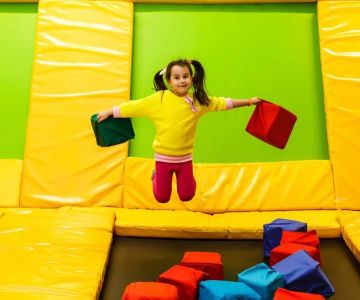
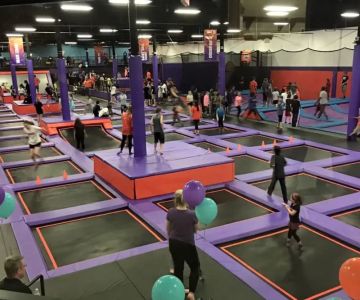
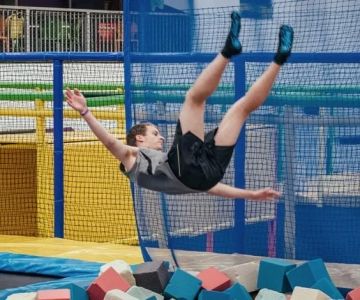
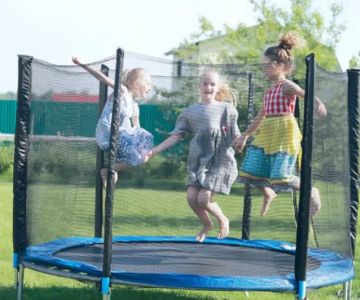

 Minneapolis Gymnastics - South4.0 (42 reviews)
Minneapolis Gymnastics - South4.0 (42 reviews) Bury the Hatchet Axe Throwing Woodbridge5.0 (14018 reviews)
Bury the Hatchet Axe Throwing Woodbridge5.0 (14018 reviews) DICK'S Sporting Goods3.0 (392 reviews)
DICK'S Sporting Goods3.0 (392 reviews) Urban Air Trampoline and Adventure Park4.0 (1012 reviews)
Urban Air Trampoline and Adventure Park4.0 (1012 reviews) Catch Air4.0 (837 reviews)
Catch Air4.0 (837 reviews) Catch Air4.0 (1165 reviews)
Catch Air4.0 (1165 reviews) Are Trampoline Parks Safe for Kids? Essential Guide for U.S. Parents
Are Trampoline Parks Safe for Kids? Essential Guide for U.S. Parents How Often Should You Replace Trampoline Springs? Tips for Proper Maintenance
How Often Should You Replace Trampoline Springs? Tips for Proper Maintenance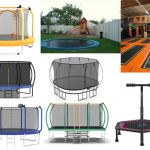 How Much Is a Trampoline? A Detailed Guide to Trampoline Costs and Buying Tips
How Much Is a Trampoline? A Detailed Guide to Trampoline Costs and Buying Tips Bounce Techniques for Stronger Legs: Effective Exercises and Tips
Bounce Techniques for Stronger Legs: Effective Exercises and Tips Essential Music Gear for Trampoline Dance: Complete Guide
Essential Music Gear for Trampoline Dance: Complete Guide Fun STEM Experiments Using Trampolines to Spark Curiosity and Learning
Fun STEM Experiments Using Trampolines to Spark Curiosity and Learning